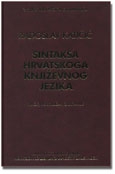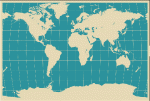Web catalog
Most read
Most read last 7 days
Most Discussed
Top rated
Statistics
- Total registered users: 9569
- Total articles: 23656
- Total comments: 2087
- Last entry: Kebo presenting evidence that Izetbegovic brought mujahideen to Bosnia
- Last update: 11.01.2019. 23:44
1900 to the present Language and politics Birth and death of Yugoslav supra-national program
Written 08.12.2009. 11:07

- But, due to the fact that these two languages have had a radically different past of almost four hundred years and only a few decades of moderately peaceful convergence- it was inevitable that they should eventually diverge. The Croatian good will quickly evaporated in Serbian-dominated Yugoslavia (1918-1941), when political pressures were applied to forge them into one, Serbian-based language- all in the spirit of supra-national Yugoslav ideology which had had roots in the 19th century idealization of South Slavic «unity», but has mutated into a variant of Greater Serbian expansionist program. This kind of «language planning», ie. forced Serbianization of language in Croatia and Bosnia, was especially ruthless in 1920s and 1930s, when Serbian language characteristics (lexical, syntactical, orthographical and morphological) had been officially prescribed for Croatian textbooks and general communication. Also, this artificial "unification" into one, Serbo-Croatian language was preferred by neo-grammarian Croatian linguists (the most notable example was influential philologist and translator Tomislav Maretić). The recipe was simple: if a term is described by two words in Croatian (a neologism and Greek/Latin Europeanism) and one word in Serbian (Europeanism)- the "choice" was to suppress Croatian neologism and "promote" Europeanism. For instance, "geography" is "geografija" in Serbian, and "zemljopis" and "geografija" in Croatian. The policy was to try to establish "geografija" as the norm and to eliminate "zemljopis". However, this school was virtually extinct by late 1920s and since then leading Croatian linguists (Petar Skok, Stjepan Ivšić and Petar Guberina) have been unanimous in re-affirmation of Croatian purist tradition. The situation somewhat eased in the eve of World War 2, but with the capitulation of Yugoslavia and creation of Nazi-Fascist puppet «Independent State of Croatia» (1941-1945) came another, this time hardly predictable and extremely grotesque attack on standard Croatian: totalitarian dictatorship of Ante Pavelić pushed natural Croatian purist tendencies to ludicrous extremes and tried to reimpose older morphonological orthography preceding Broz's prescriptions from 1892. But, Croatian linguists and writers were strongly opposed to this travesty of “language planning”- in the same way they rejected pro-Serbian forced unification in monarchist Yugoslavia (1918-1941). Not surprisingly, no Croatian dictionaries or Croatian grammars had been published during this period.
- While during monarchist Yugoslavia "Serbo-Croatian" unification was motivated mainly by Greater Serbia policy, in the Communist period (1945 to 1990) it was the by-product of Communist centralism and "internationalism". Whatever the intentions, the result was the same: the suppression of basic features that differ Croatian language from Serbian language-from orthography to vocabulary. No Croatian dictionaries (apart from historical "Croatian or Serbian", conceived in the 19th century) appeared until 1985, when Communist centralism was well in the process of decay. In Communist Yugoslavia, Serbian language and terminology were "official" in a few areas: the military, diplomacy, Federal Yugoslav institutions (various institutes and research centres), state media and jurisprudence at Yugoslav level; also, the language in Bosnia and Herzegovina was gradually Serbianized in all levels of educational system and the republic's administration. Serbian linguistic imperialism was encouraged by the Communist Party-State, which had replaced the Western concept of Nation-State in the Communist countries or the Eastern Byzantine concept of the Church-State with its Messianic politico-religious Orthodoxy. Notwithstanding the declaration of intent of AVNOJ (The Antifascist Council for the National Liberation of Yugoslavia) in 1944, which proclaimed the equality of all languages of Yugoslavia (Slovenian, Croatian, Serbian and Macedonian)-everything had, in practice, been geared towards the supremacy of the Serbian language. This was done under the pretext of "mutual enrichment" and "togetherness", hoping that the transient phase of relatively peaceful life among peoples in Yugoslavia would eventually give way to one of fusion into the supra-national, essentially paradoxical "Yugoslav" nation and provide a firmer basis for Serbianization to be stepped up. However- this "supra-national engineering" was doomed from the outset: the nations that formed ephemeral Yugoslav state were formed long before its incipience and all unification pressures only poisoned and exacerbaced inter-ethnic/national relations.
- After World War II, Yugoslavia was established as a federation. In the 1950s, a hundred years after the Vienna Agreement whose aim was to establish the Serbo-Croatian language, the differences between the Croatian and Serbian literary languages had not lessened. They were the result of several contrasting factors
- Croatian vs. Serbian literary tradition
- Latin vs. Cyrillic script
- Ijekavian variant of Štokavian as the basis for the Croatian literary language vs. Ekavian variant of Štokavian as the basis for the Serbian literary language
- Broz/Boranić's orthography for the Croats vs. Belić's orthography for the Serbs
- Croatian technical and scientific terms vs. Serbian technical and scientific terms
- Croatian religious and philosophical heritage and terminology vs. Serbian religious and philosophical heritage and terminology.
- Croatian language structural characteristics vs. Serbian language structural characteristics (phonetics, phonology, morphology, syntax, semantics)
A collective Croatian reaction against such de facto Serbian imposition erupted on 15th March 1967. On that day, nineteen Croatian scholarly institutions and cultural organizations dealing with language and literature (Croatian Universities and Academy), including foremost Croatian writers and linguists (Miroslav Krleža, Radoslav Katičić, Dalibor Brozović and Tomislav Ladan among them) issued the "Declaration Concerning the Name and the Status of the Croatian Literary Language". In the Declaration, they asked for amendment to the Constitution expressing two claims:
- the equality not of three but of four literary languages, Slovenian, Croatian, Serbian and Macedonian, and consequently, the publication of all federal laws and other federal acts in four instead of three languages
- the use of the Croatian standard language in schools and all mass communication media pertaining to the Republic of Croatia. The Declaration accused the federal authorities in Belgrade of imposing Serbian as the official state language and downgrading Croatian to the level of a local dialect.
- In the decade between the death of Yugoslav dictator Tito (1980) and the final collapse of Communism and Yugoslavia (1990/1991), major works that manifested irrepressibility of Croatian linguistic culture had appeared. The studies of Brozović, Katičić and Babić that had been circulating among specialists or printed in the obscure philological publications in the 60s and 70s (frequently condemned and suppressed by Communist authorities) have finally, in the climate of dissolving authoritarianism, been published in the broad daylight. This was formal «divorce» of Croatian language from Serbian (and, strictly linguistically speaking, death of Serbo-Croatian). The works, based on modern fields and theories (structuralist linguistics and phonology, comparative-historical linguistics and lexicology, transformational grammar and areal linguistics) revised or discarded older «language histories», restored the continuity of Croatian language by definitely reintegrating and asserting specific Croatian language characteristics (phonetic, morphological, syntactic and lexical) that had been constantly suppressed in both Yugoslav states and finally gave modern linguistic description and prescription of Croatian language. Among many monographs and serious studies, one could point out to works issued by Croatian Academy of Sciences and Arts, particularly Katičić's «Syntax» and Babić's «Word-formation».
After the collapse of Communism and the birth of Croatian independence (1991), situation with regard to the Croatian language has become stabilized. Finally freed from political pressures and de-Croatization impositions, Croatian linguists expanded the work on various ambitious programs and intensified their studies on current dominant areas of linguistics: mathematical and corpus linguistics, textology, psycholinguistics, language acquisition and historical lexicography. From 1991 numerous representative Croatian linguistic works were published, among them four voluminous monolingual dictionaries of contemporary Croatian, various specialized dictionaries and normative manuals (the most representative being the issue of Institute for Croatian Language and Linguistics). For a curious bystander, probably the most noticeable language feature in Croatian society was re-Croatization of Croatian language in all areas, from phonetics to semantics- and most evidently in everyday vocabulary. Some observers with Yugoslav affinities deplored such a course of events. But, having in mind the vocal silence of such “multiculturalist” proponents of Serbo-Croatian when Croatian orthographies were literally burnt in auto-da-fes (1971), one can only conclude with regard to the death of this “language”: qualis vita, et mors ita !
Literature
Ivo Banac: Main Trends in the Croatian Language Question, Yale University Press, 1984
Branko Franolić: A Historical Survey of Literary Croatian, Nouvelles editions latines, Paris, 1984
Milan Moguš: A History of the Croatian Language, Globus, Zagreb, 1995
Miro Kačić: Croatian and Serbian: Delusions and Distortions, Novi Most, Zagreb, 1997
Croatian language history
http://www.croatianacademy.org/croatian-language-vol25-26.htm
Croatian language from the eleventh century to the computer age
http://www.hic.hr/hrvatski/izdavalastvo/FOLIA.pdf
FOLIA CROATICA-CANADIANA: A magnificent 243 pages (3.4 Mb)
long survey on all aspects of Croatian language history. Slow download.
Representative texts in Croatian
http://aatseel.org/croatlit/croataatseel2.htm
A COMPENDIUM OF CROATIAN LITERARY RESOURCES ON THE WEB
A digital collection of poetry dating from the Renaissance to the end of the 19th century
http://www.ffzg.hr/infoz/dzs/popis.htm
The major Croatian works from the Renaissance to the early Modernism
http://www.sskranjcevic.hr/
Silvije Strahimir Kranjčević: collected works
http://www.geocities.com/cesarica42/Tin_Ujevic.htm
Tin Ujević- selected poetry
http://www.borut.com/library/a_krlezm.htm
Miroslav Krleža- selected prose, short stories and a novel
http://www.borut.com/library/a_dizdam.htm
Mak Dizdar- selected poetry
http://www.hbk.hr/biblija
Bible in Croatian (searchable text)
Croatian standard language
http://www.hr/hrvatska/language/index.en.htm
Croatian language: introduction, pronunciation and basic phrases
http://www.hnk.ffzg.hr/jthj/default_english.htm
Croatian Language Technologies Homepage
http://www.hnk.ffzg.hr/cnc.htm
Croatian National Corpus
http://eleaston.com/croatian.html
Croatian language resources
http://www.tkuzmic.com/dictionary/index.php
Online English-Croatian-English Dictionary
Institutions
http://public.srce.hr/staroslavenski-institut/en/home.html
Old Church Slavonic Institute
http://mahazu.hazu.hr/ENG/Dep5.html
Croatian Academy of Arts and Sciences: The Department od Philological Sciences
http://www.ihjj.hr
Institute for Croatian Language and Linguistics
http://www.ffzg.hr/kroat
Zagreb University, Faculty of Philosophy: Croatian Department
http://www.lzmk.hr/
Lexicographic Institute Miroslav Krleža
http://www.matica.hr/
Matica hrvatska
http://crodip.ffzg.hr/default_e.aspx
Croatian Old Dictionary Portal
Related articles
- 1700 to 1900 Expansion of the Štokavian vernacular influence Illyrian movement, final scriptory reform and language unification
- 1500 to 1700 Modern Croatian language Turkish invasion and migrations Renaissance and Baroque regional literatures and standardization
- 1100 to 1500 Church Slavonic literature, dialectal differentiation and vernacular literacy Cyrillic and Latin Script
- History: 600 to 1100 Latin and Church Slavonic literacy Glagolitic Script as the medium of Croatian Church Slavonic
- Pre-history: Indo-European and Slavic languages
- Archive of related articles
























































 Kontaktirajte nas
Kontaktirajte nas
No comments